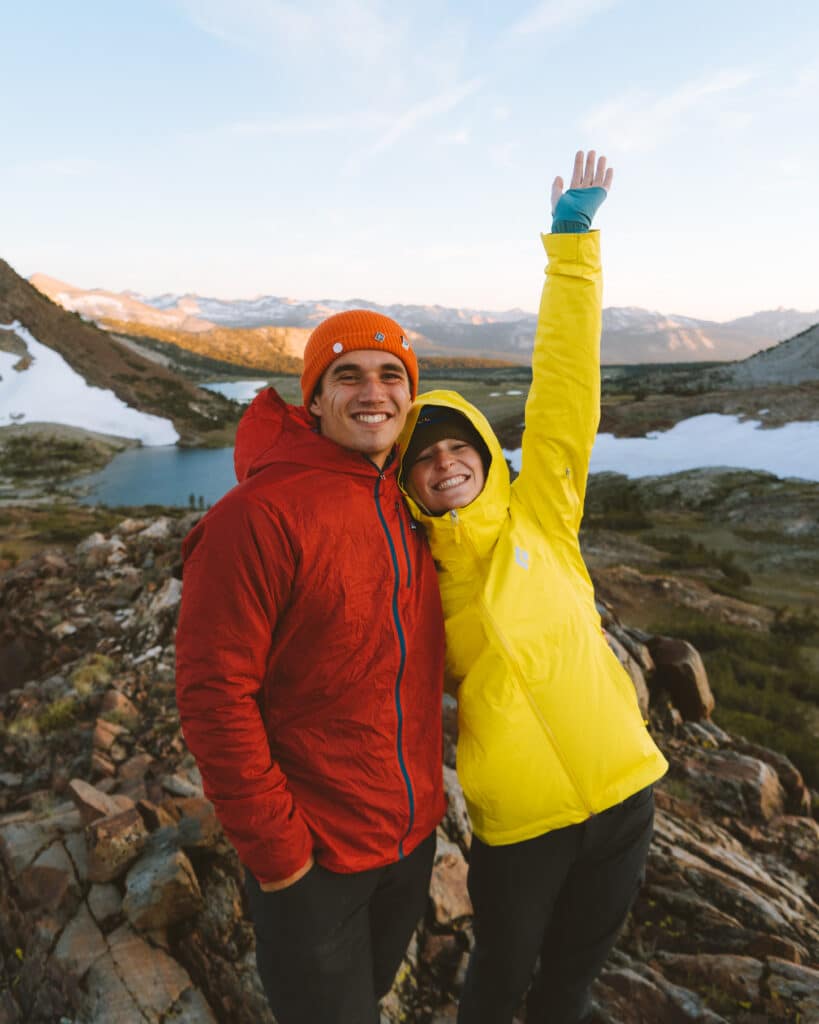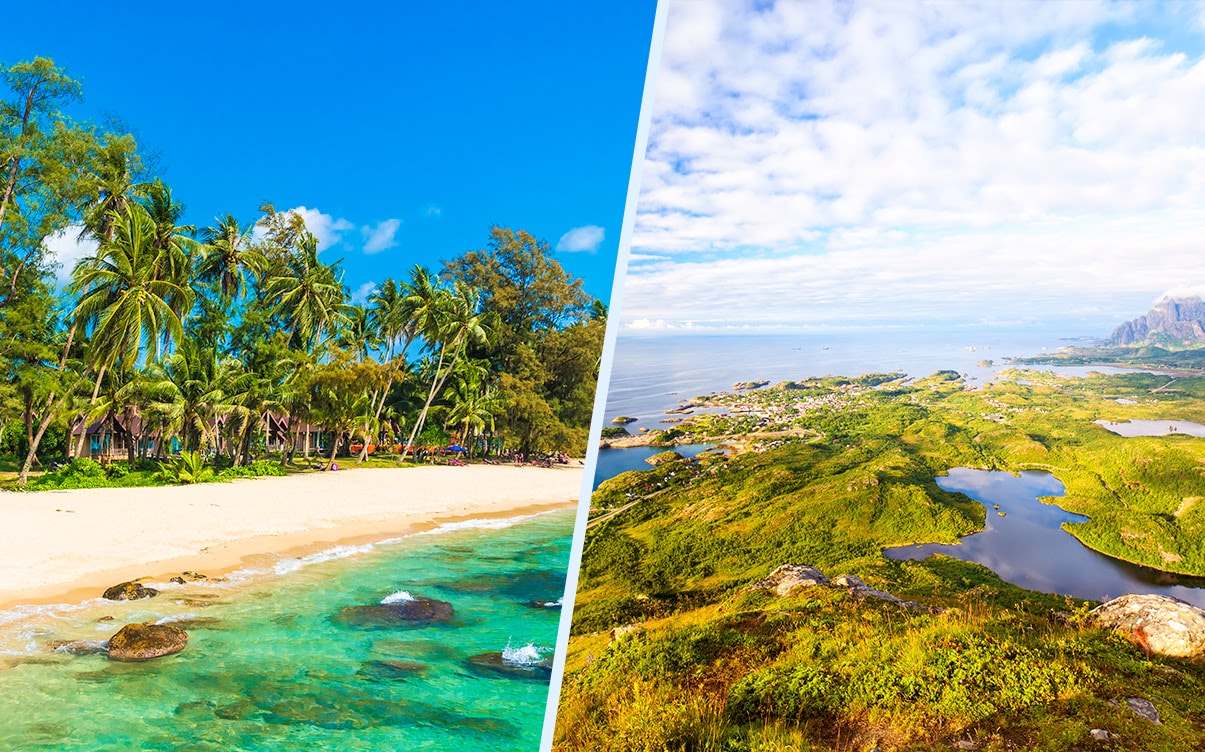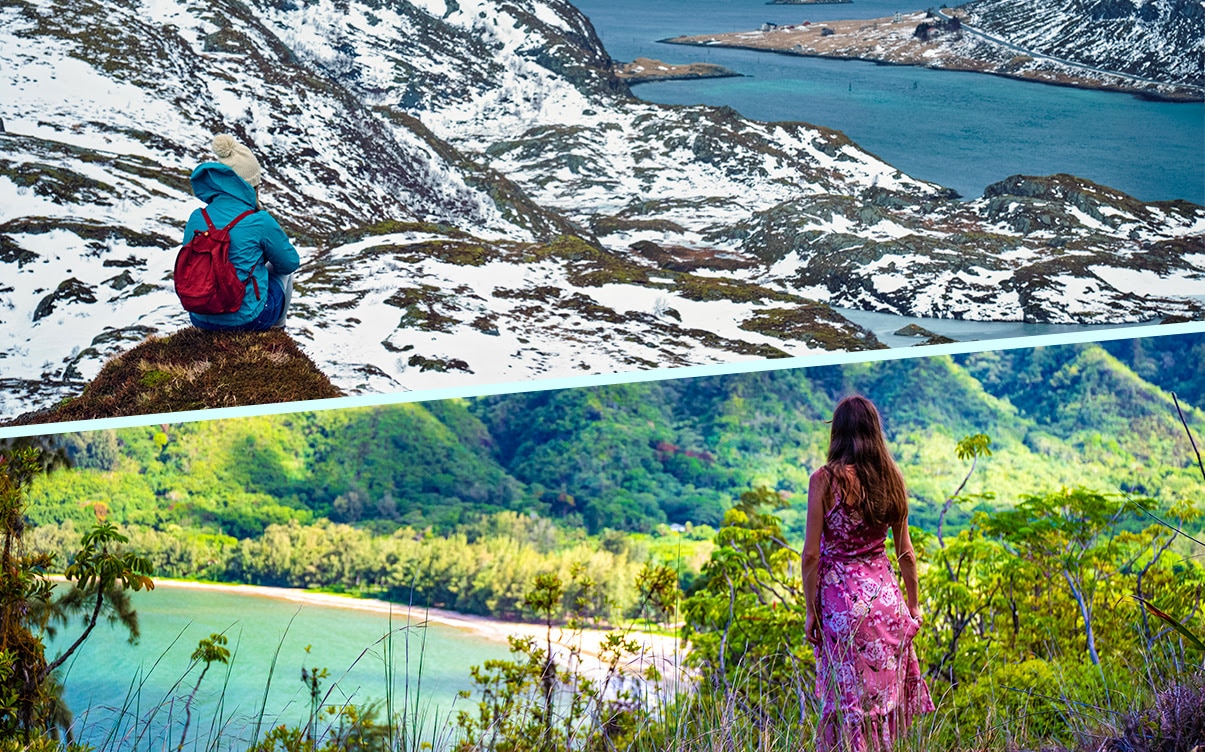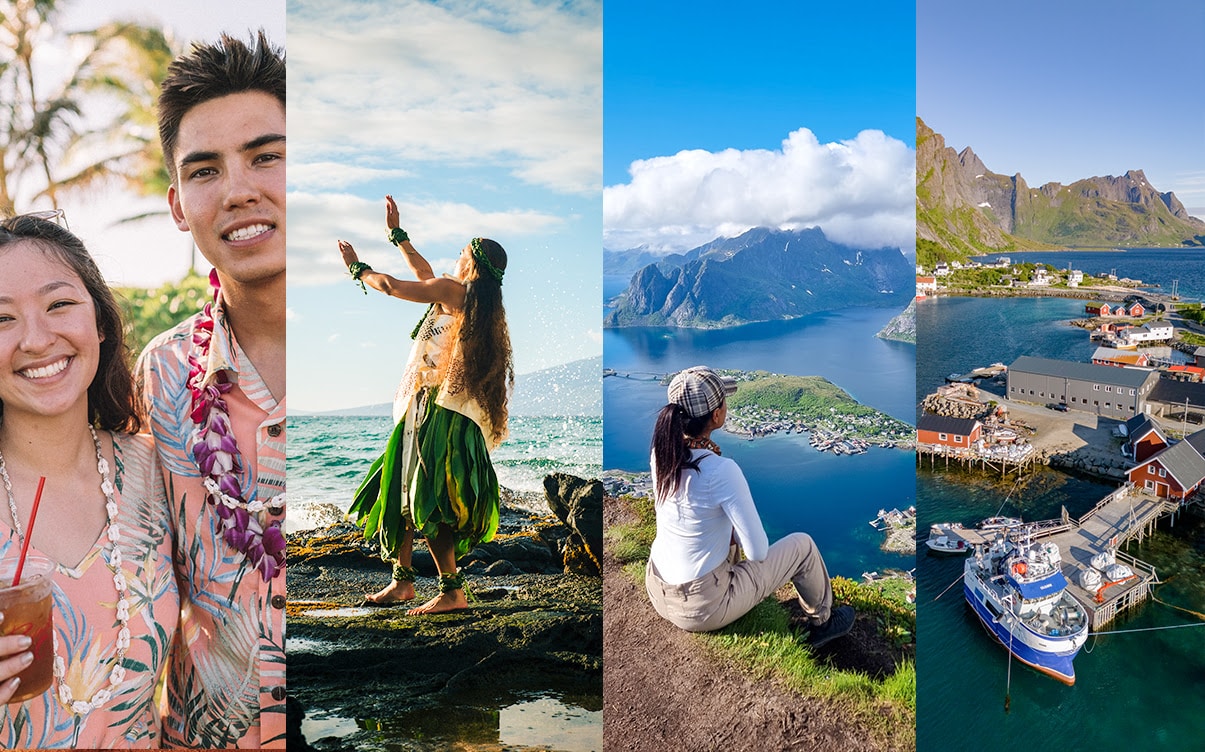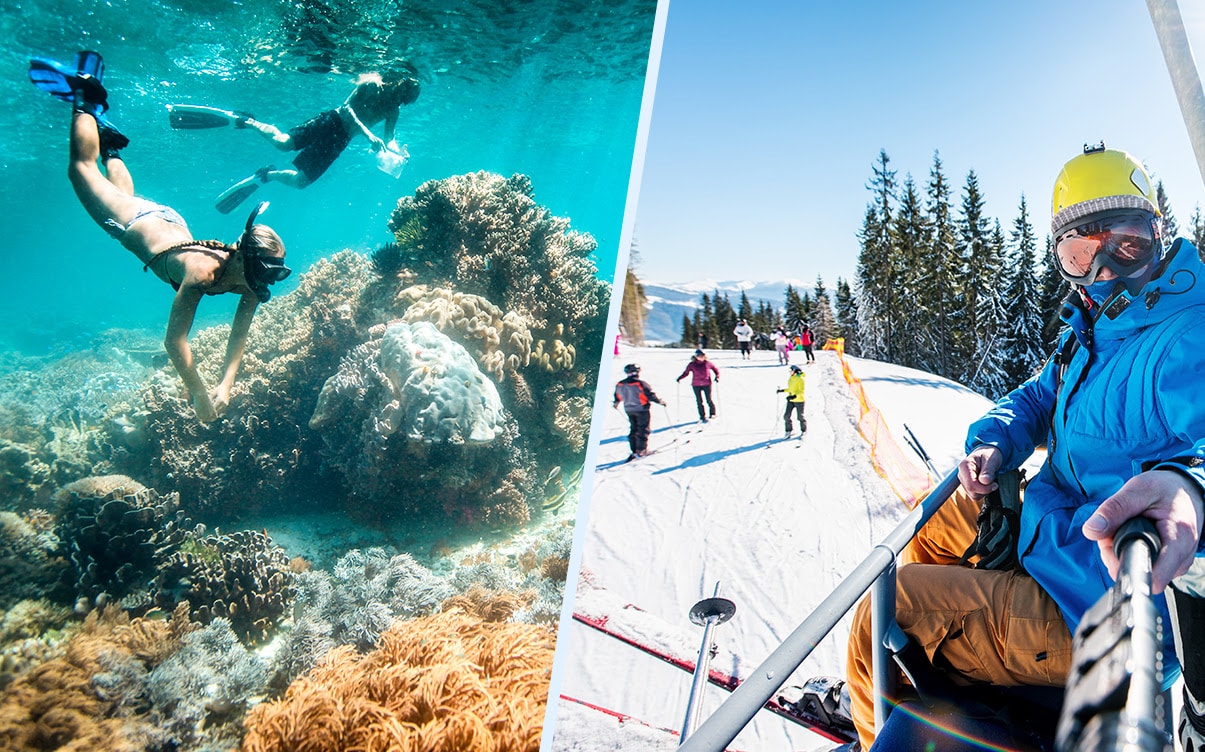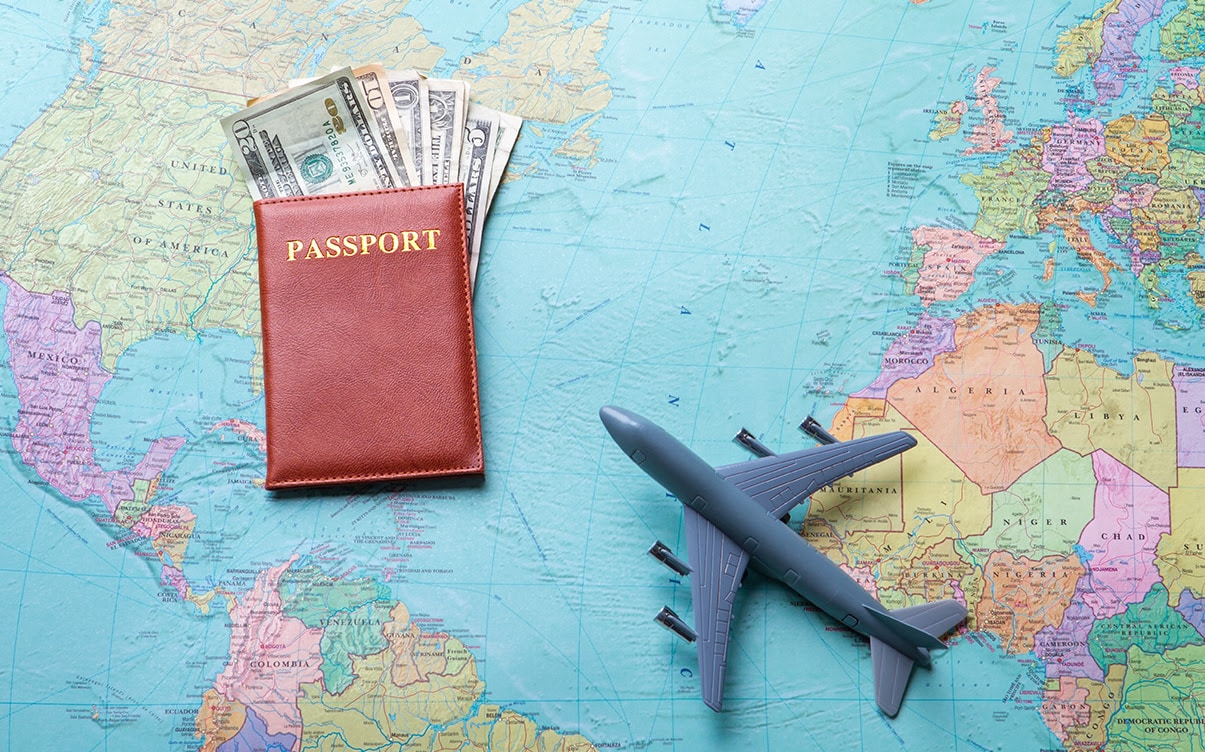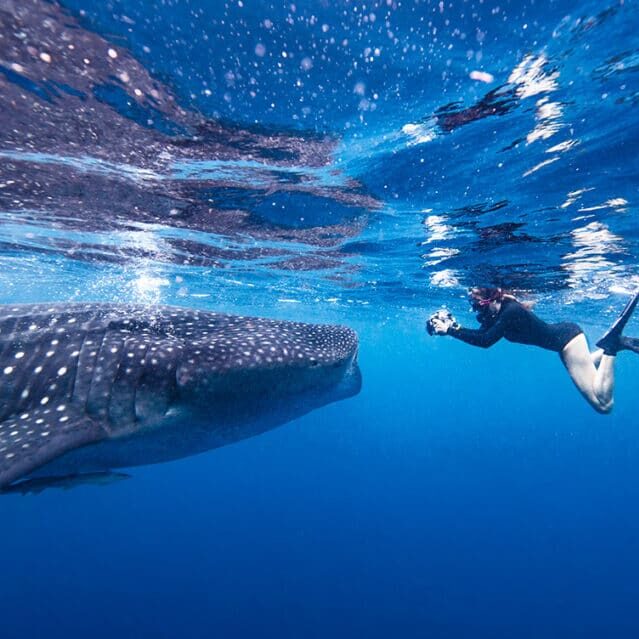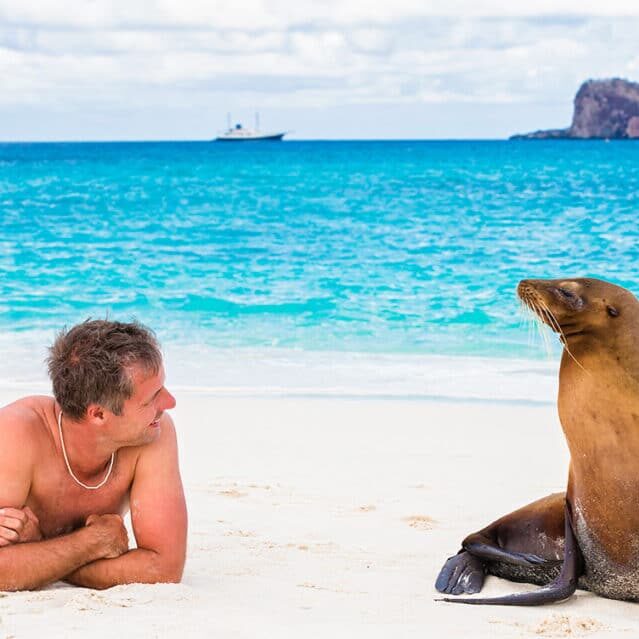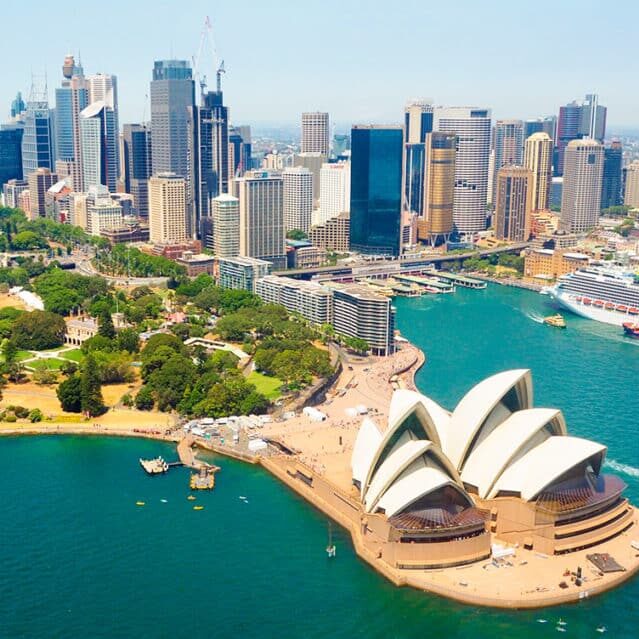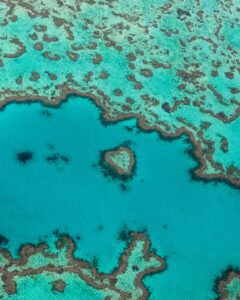Lofoten Islands or Hawaii: How Do the Two Compare?
Disclaimer: This post may contain affiliate links. Please see our Disclosure Policy and Advertiser Disclosure for details.
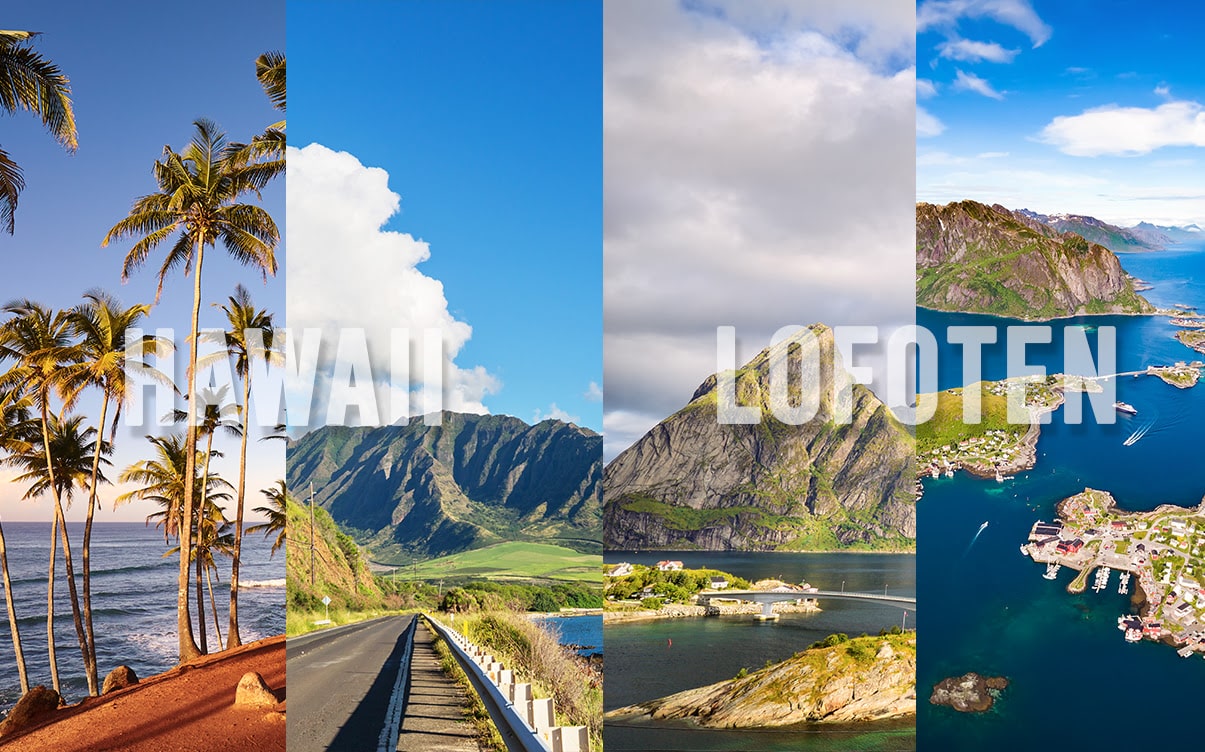
You want to go on a vacation to an exotic destination. You’re ready for adventure, and you’re looking for somewhere that meets your criteria. You want an island destination, somewhere with stark and vibrant scenery, mountains and beaches, stunning views, and plenty to do both above and beneath the waves. An island with seemingly endless sunlight to bask in.
Pop quiz: where are we describing?
Actually, there are dozens of island destinations all around the world that can fit this description. Not all of them are mountainous, though, so we can rule out places like the Maldives. Others maybe aren’t as vibrant or don’t have quite as much going on. Even still, that leaves a lot of locations throughout the Caribbean, the Pacific, and – in this case – Norway.
That’s right; all the way in the frozen north, a hair off the coast of Norway, lies a set of islands called Lofoten. These islands are idyllic, green, and mountainous and have an incredible view of the sea. They’re also home to endless sunshine, brilliant adventures, and unforgettable memories.
There’s just one problem: you can only visit one island at a time! So, which do you choose, Hawaii or Lofoten? How do the two stack up?
Well, despite how much we’ve drawn the comparison, and even though part of Lofoten is even called “little Hawaii” by the locals, there are quite a few differences between them. Let’s talk about it and help you decide which one to visit first!
Lofoten and Hawaii: What They Are and Where They’re Located
Hawaii, our well-known tropical US state, is a stretch of islands located deep in the Pacific Ocean. It’s located some 2,400 miles off the coast of California and 1,300 miles north of the equator. In that sense, it’s not exactly a tropical, equatorial island like many of the other islands we’ve covered on this blog, but it’s still further south and more tropical than any other US state.
When you think of Hawaii, you probably think of the standard map of the United States, with the 48 continental states and a couple of inset boxes showing Hawaii and Alaska, nowhere near their actual positions or scale. Depending on how well-drawn that map is, you might think of Kawaii as being pretty small and made up of maybe half a dozen islands, including a couple of large, famous islands we all know about.
In truth, Hawaii is a chain of 137 islands! The main islands like Kauai, O’ahu, Maui, and the Big Island are, of course, widely recognized, but there are over 100 other islands stretching throughout the area. Most of them are uninhabited and tiny, little more than chunks of coral and rocks sitting just above the waterline, but others are larger and inhabited; they just don’t get as much press as the bigger and more popular islands.
So, what about Lofoten? Lofoten is one of those hard-to-describe chunks of land in the far north of Europe, part of the Scandinavian archipelagic systems laced with rivers, lakes, fjords, and crisscrossing water lines dividing it all up.
Located above the Arctic Circle, you would never be able to describe Lofoten as tropical. The similarity to Hawaii comes primarily in appearance in photos; green islands dominated by mountainous peaks, clear blue waters and bright blue skies, and other such surface-level comparisons are fairly apt. In person, though, they’re very different from one another.
Like Hawaii, many people familiar with the area might underestimate how many islands are in the Lofoten Archipelago. There are seven major islands, called the principal islands, and a whole smattering of smaller islands. Just like Hawaii, most of these smaller islands are uninhabited and even unnamed.
Unlike Hawaii, the islands that make up Lofoten aren’t entirely recognized or enumerated. There are somewhere around 80 of them, but throughout history, which islands belong to which municipalities – and even what constitutes a distinct island – has varied. Either way, there are a few big names you’re likely to be spending your time on, as well as a lot of little islands that are nice to see but don’t offer much to explore directly.
Comparing the two, Lofoten and Hawaii are very different geographically speaking. Hawaii is a stretch of volcanic peaks and rocks jutting up from the ocean, just barely reaching above the surface in some cases, and it’s southerly, tropical, and warm. Lofoten, meanwhile, are long-dead volcanic formations scarred by billions of years of tectonic activity, weather, and more.
Lofoten and Hawaii: Average Climate
As you might expect from their respective locations, the climate and weather on the two groups of islands are also very different.
Hawaii is tropical enough that it has mild temperatures most of the year, with relatively mild levels of humidity, steady winds, fairly infrequent severe storms, and mild seasons. In fact, Hawaii is generally considered to only have two seasons, Summer and Winter; summer stretches from May to October, while winter stretches from November to April. As you would expect, the winter is also the wet season, with more rainfall and brief showers throughout the season.
This is, however, very reductive. The actual reality is that different parts of different islands all have very different local climates. In fact, using the Koppen Climate Type categorization, Hawaii has areas with 10 (out of a possible 14) different types of climate, ranging from tropical to arid to temperate.
It’s also worth noting that ongoing climate change is having an impact on Hawaii, largely leaving it hotter and drier across the board. Not only does this threaten some unique ecosystems, but it also increases the threat of wildfires and the effects of volcanic eruptions, which may, over the decades, make Hawaii much less desirable.
Temperatures in Hawaii are roughly what you would expect for more-or-less tropical islands. Summer highs can be around 85-90 degrees, and they only dip down to 75-80 in the winter months. Snowfall can happen on the islands despite that, but it’s limited to the peaks of the mountains on a few of the islands.
It’s also very picturesque in terms of weather. Rain happens, but it blows through quickly, and the skies are clear for large parts of the year. Due to a quirk of how the trade winds blow, air higher up is dry, so clouds don’t form as well.
Lofoten, meanwhile, is very different in almost every respect. The archipelago is north of the Arctic Circle and, as such, has much more pronounced seasonality, higher swings in temperatures, and widely varying days. It’s one of the regions in the northern world where the “midnight sun” shines all day long for about six weeks, from late May to early July. That’s a big difference right there!
Average highs in Lofoten range from the low 30s in the winter to the 60s in the summer, though the record high is 86. Lows in winter are generally in the 30s as well, making winter days fairly stable; in the summer, lows are around the 50s. There are swings, and the record lows are well under freezing temperatures, so it’s not guaranteed to be as stable as it sounds.
Lofoten often gets plenty of snow in the winter, leaving the formerly green islands a stark white and blue-gray. It’s fairly similar to places like Iceland in that respect, though it doesn’t tend to get that much snow.
Comparing the two, Hawaii is much warmer, with even days and nights, while Lofoten is colder and can be coated in snow in the winter. Despite this, both archipelagos share bright blue skies and a relative lack of clouds even in the rainier/snowier seasons, which is a big part of what draws the comparisons between the two.
Lofoten and Hawaii: Population, Culture, and Key Details
Now let’s compare a bunch of the details of each of these island destinations.
Population: Hawaii has a population of 1.4 million people residing in the state, which doesn’t count the tourists coming in all year round. Lofoten is much more isolated, is based primarily around a couple of fishing villages, and has a total population of around 25,000 people. Very different! You’re vastly more likely to have entire islands to yourself in Lofoten than you are in Hawaii.
Culture of origin: Lofoten, as a far north Nordic region, has a long history of settlement from Norwegian populations. While people have been on the islands since as far back as 250 BC and evidence of human settlement has been found from 11,000 years ago, it hasn’t been the subject of colonization or repeated changes in ownership like many other areas. Hawaii, meanwhile, has been home to Polynesian and native Hawaiian cultures for a very long time. With a rich native culture interspersed with modern Americanism, Hawaii is one of the most unique places in the world, culturally speaking.
Primary language: Hawaii is a US state, so English is, of course, the primary language. Some groups of people also speak Hawaiian and Hawaiian Creole, though this language is considered critically endangered, with a native-speaking population under 100,000. Other languages spoken on the islands include Tagalog and Japanese. Lofoten has a decent number of people who speak English, especially people involved in tourism, but the primary language is a northern dialect of Norwegian. There are also a handful of Sami speakers as well.
Lofoten and Hawaii: Things to Do
If you visit these islands, what are some of the most compelling adventures to have and things to do? There’s a lot in both places, so we’re paring this down to just a handful of the most interesting options.
Hawaii:
- Dive under the waves and go snorkeling to see the tropical reefs and exotic aquatic life.
- Bask on the beaches and soak up the sun while watching both people and wildlife, including whales.
- Visit museums and cultural attractions, including ancient Polynesian murals or the Pearl Harbor Museum.
- Hike the temperate and tropical forests and experience the many variations in climate across the islands.
- Climb the volcanic peaks and get a view of the endless ocean all around.
Lofoten:
- Visit in winter and go on ski tours and mountain hikes to the many peaks, cliffs, and perches you can find scattered everywhere.
- Stay up late and keep your eyes on the skies for a chance to see the northern lights.
- Explore the waterways with kayaking, fishing, water safaris, and even surfing and snorkeling when it’s warmer out.
- Soak in the rich arts culture and the many art galleries and cultural museums in the big villages.
- Enjoy some of the freshest seafood in the world with unique Scandinavian recipes unlike any found elsewhere in the world.
Obviously, there’s a ton more you can do, but this should give you an idea of what you’re likely to find on each of these island chains.
Lofoten and Hawaii: Cost and Requirements to Visit
Hawaii, as a US state, only requires a plane ticket and a place to stay to make the trip out. Plane tickets vary in cost, of course, depending on where you’re coming from. Decent hotels can be found for $100-$200 per night, though the sky’s the limit depending on your expectations. Of course, some rare travelers don’t even book a place to stay and just hang out on the comfortable beaches overnight!
Lofoten is a little trickier to get to as Americans. Since it’s another country – Norway – you need a passport that can get you into Europe. You will also need to fly to Norway first, usually Oslo, before hopping on a connecting flight to Lofoten since there are no direct flights to the tiny airports out there. Lodging in Lofoten is less expensive, ranging from $50 to $150 per night, depending on where you want to stay.
So, what do you think? Would you rather face the crowds but enjoy the tropical weather in Hawaii, or are you more the sort who prefers the great outdoors, untamed wilderness, and relative isolation that you can get above the Arctic Circle up in Lofoten? Have you visited one or the other before? Let us know all about it, and tell us which you prefer!
You may also enjoy:
